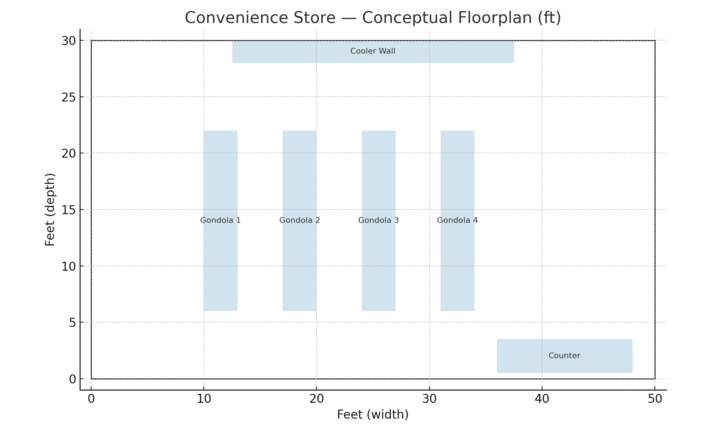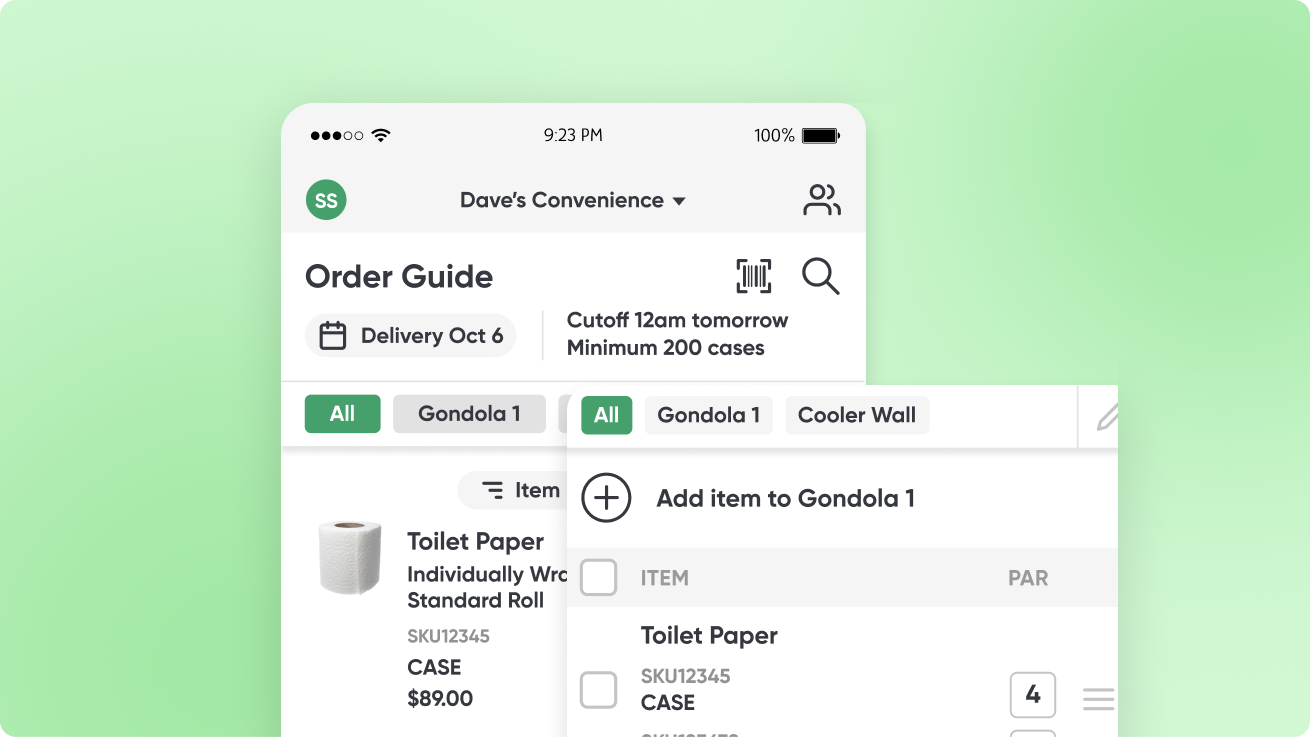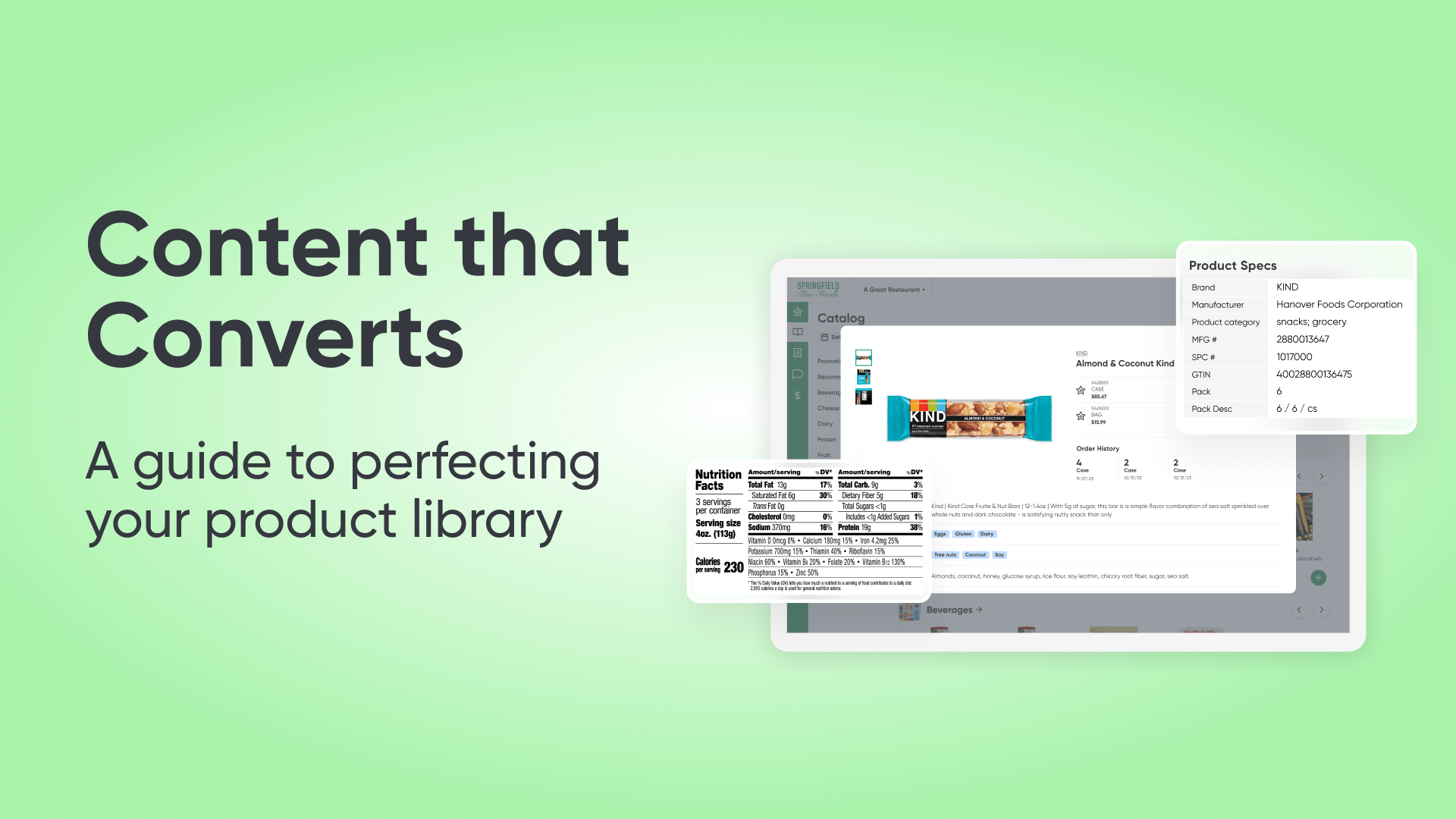Planograms Explained: The Blueprint for C-Store Success
In convenience distribution, planograms aren’t just diagrams - they’re the blueprint for how shelves should look, which products must be stocked, and how supplier investments get carried out.
For distributors, the challenge is making sure every order and store reset follows those rules. Digital ordering makes this much easier by reducing mistakes, reinforce supplier programs, and strengthen retailer relationships.
What Are Planograms in Convenience Distribution?
A planogram is a schematic that shows how products should be arranged on shelves, racks, or displays. In convenience stores, planograms ensure consistent shopping experiences, maximize visibility for priority items, and carry out suppliers’ promotional strategies across locations.
Examples:
- A beverage supplier requires its cans to sit in the middle rows of a cooler.
- A snack brand funds seasonal endcap placements.

For distributors, these aren’t suggestions - they’re merchandising guidelines. Supporting them correctly protects supplier partnerships and positions you as more than just a logistics provider, but as a trusted merchandising partner.
Why Planograms Matter for Convenience Distributors
Planograms carry both financial and relational weight:
- Retailer Relationships: Stores rely on distributors to deliver the right products in the right quantities. Planogram support builds trust.
- Consumer Experience: Shoppers expect consistency. Correct shelf sets make it easier for them to find products, driving repeat sales.
- Supplier Partnerships: Suppliers invest heavily in shelf placement. Distributors that enforce planograms protect those dollars and open doors for future programs.
- Distributor Growth: Providing planogram services - like set planning and tag printing - helps a distributor win more market share and influence.
From Secondary to Primary: The Real Value of Planogram Support
Most retailers work with multiple distributors, but only one or two earn the title of primary distributor—the one trusted with the majority of product flow.
- Value-Added Service: Distributors that help operators design and execute planograms move beyond order-taking to become strategic partners.
- Proven Sales Impact: Better shelf execution leads to higher consumer purchases, directly benefiting the operator.
- Competitive Advantage: Secondary distributors that invest in services like set planning and batch tag printing can steal back SKUs, grow their share of wallet, and position themselves as the operator’s primary partner.
Planogram support isn’t just about compliance - it’s a growth strategy.
Standard vs. Specialized Planograms: Meeting Different Store Needs
Not all planograms are created equal:
- Independent Stores: Rely on standard planogram templates that fit common layouts.
- Chains: Require specialized planograms tied to uniform store templates, so every location delivers the same customer experience.
For distributors, this means balancing one-size-fits-most guidance with chain-specific execution, often using dedicated planogram PDFs.
The Challenge: Why Supporting Planograms Is Harder Than It Looks
Planograms sound simple: follow the diagram, stock the shelves. In reality:
- Manual Processes: PDFs, clipboards, and spreadsheets make errors inevitable.
- Missed SKUs: Without digital prompts, required items are skipped or swapped.
- Disconnected Promotions: Supplier placements often stop at the shelf instead of extending online.
- Rep Burden: Sales reps juggle planogram rules from memory, creating inconsistency.
The result? Confusion for independents and weakened trust with retailers and suppliers. That’s where digital ordering changes the game.
How Growth Tools Support Planogram Execution
Solutions Platforms can mirror planograms inside digital order guides, creating a seamless link between physical shelves and digital ordering.
Mirror Shelves Digitally With Shelf-Aware Order Guides
Instead of scrolling through generic or paper catalogs, retailers see their shelves represented online. That means:
- Required SKUs appear in the same sequence as in-store displays.
- Promotional items are featured prominently online, just like on endcaps or cooler rows.
- Seasonal resets update instantly across digital catalogs.
This creates a seamless link between shelves and ordering.

Eliminate Errors With Smarter Reordering
Traditional ordering methods (clipboards, spreadsheets, or memory) leave room for error. Digital platforms reduce risk by:
- Auto-populating carts with required SKUs.
- Alerting when essential items are missing.
- Suggesting reorder quantities based on history.
The outcome: faster orders, fewer mistakes, and planogram-compliant shelves.
Extend Supplier Promotions Beyond the Shelf
Suppliers spend heavily to secure premium planogram positions in-store. But visibility often ends at the shelf. A growth-focused platform extends those strategies online:
- Sponsored ads mirror in-store promotions.
- Banners highlight new launches like digital endcaps.
- Bundles or sampling align with seasonal resets. Instead of treating digital ordering and merchandising separately, distributors can unify them - amplifying supplier ROI.
Instead of treating digital ordering and merchandising separately, distributors unify them and amplify supplier ROI.
Why Planogram Support Makes Reps Indispensable
Distributor sales reps (DSRs) often juggle planogram rules manually. Digital support changes the game:
- Earn Primary Status: By offering services like set planning or batch tag printing, reps help their distributor move from secondary to primary supplier.
- Relationship Building: Supporting planograms makes reps trusted advisors, not just case sellers.
- Real-Time Alerts: If a required SKU is missed, reps can correct it instantly.
- Data-Backed Insights: Usage reports show where operators are under-ordering, helping reps guide better shelf execution.
Planogram support turns DSRs into indispensable partners who drive both sales and loyalty.
Key Digital Features That Bring Planograms to Life
The right digital platform makes planograms actionable. For distributors, these features matter most:
The most useful tools include:
- Batch Tag Printing: Import planograms, generate tags, and print via Bluetooth on-site.
- Custom Order Guides: Tailored to each retailer’s layout.
- Sponsored Ads & Displays: Extend supplier promotions into ordering.
- Sales Alerts: Notify reps and retailers of missing items.
- Compliance Dashboards: Track adherence and flag gaps.
- Menu Costing & Profitability Tools: Show operators the upside of planogram compliance.
From Features to Execution: Turning Tools Into Real Results
Having the right features is only half the battle. The real differentiator comes from how distributors apply those tools in the field. Technology like batch tag printing or custom order guides can unlock compliance and growth - but without the right rollout strategy, even the best tools won’t deliver their full value.
That’s where best practices come in.
Best Practices for Distributors
Supporting planograms well comes down to five key practices:
- Mirror, Don’t Replace: Digitally replicate shelves without disrupting the retailer’s strategy.
- Start Small: Pilot with one chain or category before scaling broadly.
- Leverage Data: Use compliance reports as conversation starters, not audits.
- Engage Suppliers: Extend promotions online and secure co-op support.
- Prioritize Training: Keep adoption simple with demos and quick-start guides.
When done consistently, these practices protect supplier investments, build retailer trust, and strengthen a distributor’s position as the operator’s primary partner.
Why Pepper Is Built for Convenience Store Success
Following best practices is easier when the right tools are built in. Unlike rigid ERP portals, Pepper was designed with c-store merchandising in mind:
- Mirror planograms digitally: Custom order guides replicate shelves exactly as they appear in-store.
- Scale pilots quickly: Flexible setup makes it simple to start with one chain and roll out to many.
- Turn data into conversations: Compliance dashboards highlight gaps and opportunities, so reps can guide—not police—operators.
- Engage suppliers directly: Ads, sponsored keywords, and sampling extend promotions beyond the shelf.
- Keep training effortless: A mobile-first design and intuitive workflows make adoption simple for reps and retailers alike.
For reps, that means fewer headaches and stronger customer relationships. For distributors, it means protecting supplier dollars, securing primary status, and driving incremental growth.
.webp)
Schedule a Pepper Demo today






















.png)







.jpg)
